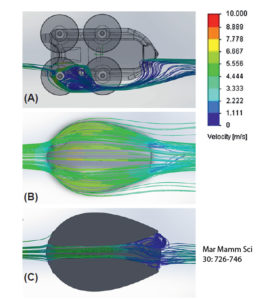Current and Previous Projects
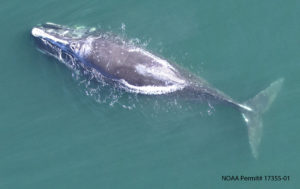
Aerial Health Assessment of Marine Mammals
Collaborators:
Wayne Perryman, John Durban and Holly Fearnbach, Southwest Fisheries Science Center, NMFS, NOAA
Don LeRoi, Aerial Imaging Solutions
Amy Apprill and Carolyn Miller, Woods Hole Oceanographic Institution
Affordable unmanned multirotor aerial systems are enabling unprecedented perspectives on marine mammal health. This project aims to acquire high quality photogrammetry of marine mammals, especially large whales, to acquire total length and length to width ratios to accurately assess body condition. Samples of exhalate from the same animals, analyzed for a range of metabolic and microbiological parameters holds the promise of diagnosing possible reasons for observed variability in body condition.
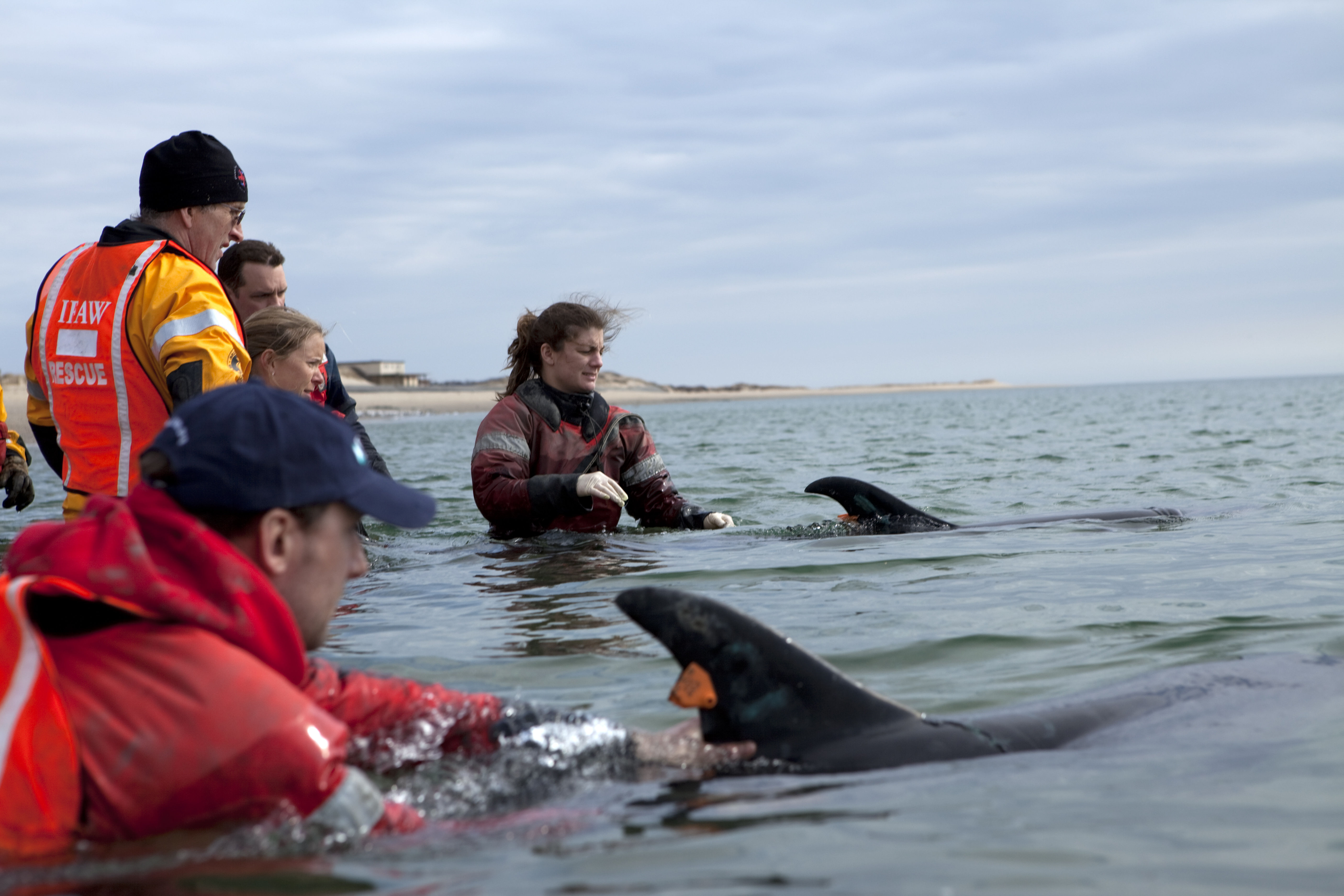
Management of Stranded Marine Mammals
Veterinary Care Stranded Marine Mammals on Cape Cod
Collaborators:
Marine Mammal Rescue and Research Division of the International Fund for Animal Welfare (IFAW - www.ifaw.org)
Since 1998 IFAW MMRR and previously the Cape Cod Stranding Network has been managing live and dead stranded marine mammals in SE Massachusetts with authorization form the National Oceanic Atmospheric Administration. Many of these cases are found on the beaches of Cape Cod. Dr Moore provides veterinary services to IFAW MMRR.
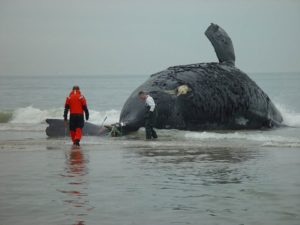
Right Whale Necropsy
Collaborators:
William McLellan, University of North Carolina, Wilmington, New England Aquarium, NOAA Fisheries, Department of Fisheries and Oceans Canada, Pierre-Yves D'Aoust, Atlantic Veterinary College
With support from NOAA Fisheries, we undertake diagnostic necropsies of North Atlantic right whale mortalities. With permission from the journal editor a preprint of an article in the Journal of Cetacean Research and Management describing right whale mortalities for the period 1970 to 2002 can be downloaded
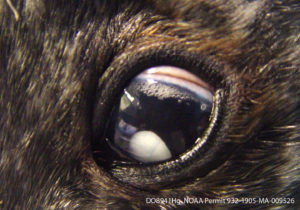
Marine Mammal Diving Pathophysiology
Collaborators:
Terry Hammar, Andreas Fahlman, Sophie Dennison
We have documented perimortem bubble formation in seals and dolphins drowned at depth in fishing gear (Veterinary Pathology 46: 536-547, 2009). We believe this indicates that such diving mammals are routinely supersaturated, and that they avoid clinical decompression sickness behaviorally. With support from the Office of Naval Research we are developed tools to study the underlying basis for these observations, by building a hyperbaric chamber compatible with a CT scanner, and by developing protocols for the use of Veterinary Ultrasound on live stranded marine mammals. See: Moore M, Hammar T, Arruda J, Cramer S, Dennison S, Montie EW, Fahlman A (2011) Hyperbaric computed tomographic measurement of lung compression in seals and dolphins. Journal Experimental Biology 214:2390-2397
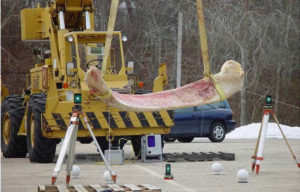
Right Whale Collisions
Modelling Ship and Right Whale Interactions
Collaborators:
Regina Campbell-Malone, WHOI/MIT Graduate Student Ken Balwin and Igor Tsukrov, University of New Hampshire
With support from NOAA Fisheries and the WHOI Ocean Life Institute we are using the lower jaw of the right whale as a test case, we are modelling the phsysical and material properties of blunt force collision between right whales and large ships. This should establish a better understanding of the force required for lethality in such a collision.
2008 Campbell-Malone, Barco S, Daoust, PY, Knowlton, A, McLellan W, Rotstein D, Moore M. Gross and histologic evidence of sharp and blunt trauma in North Atlantic right whales (Eubalaena glacialis) killed by ships. Journal of Zoo and Wildlife Medicine vol. 39:37-55
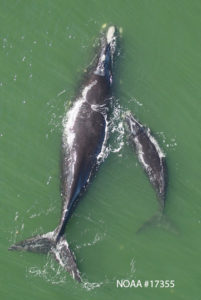
Right Whale Health
Studies of the Health of North Atlantic Right Whales
Collaborators:
Carolyn Miller, WHOI/ BUMP Graduate Student
Heather Pettis, New England Aquarium
Wayne Perryman, NOAA Fisheries
We are examining parameters pertinent to the reproductive failure of the North Atlantic right whale.
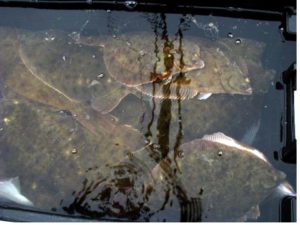
MWRA
Harbor and Outfall Monitoring Program - Fish and Shellfish studies
Collaborators:
Maurice Hall, MWRA
Since 1991 we have monitored the prevalence of contaminant induced liver pathology and other pathologies in winter flounder from 5 stations in Massachusetts and Cape Cod Bays for the Massachusetts Water Resources Authority as a sub-contractor to Battelle Duxbury and AECOM Environmental until recently, and now with Normandeau Associates. Technical reports for this program can be obtained at: http://www.mwra.state.ma.us/harbor/enquad/trlist.html
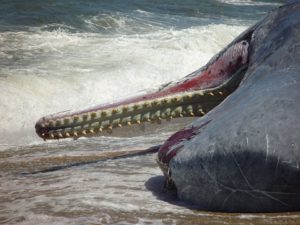
Sperm Whale Bone Project
Collaborators:
Greg Early
In June 2002 we undertook a necropsy on a sperm whale that died on the beach at Great Point in Nantucket. Findings of significant bone lesions in certain bones lead us to compare that animal with others in museums on the US East coast. Our findings have been published in Science (2004) 306:2215. ABSTRACT TEXT The sperm whale from Nantucket that we examined is on public display at the New Bedford Whaling Museum Sperm whale dives last about an hour, but can be up to 2 hours and they go to 1-2000m in depth. The current global population has been recently estimated to be 360,000 animals, reduced from an estimated pre-whaling stock of about 1.1 million. (Whitehead, H. 2002. Estimates of the current global population size and historical trajectory for sperm whales. Mar. Ecol. Prog. Ser.242:295-304.) They feed on a variety of deep-water squid and some fish species. Links to other relevant sites: Facts about sperm whales Sperm whale biology lectures
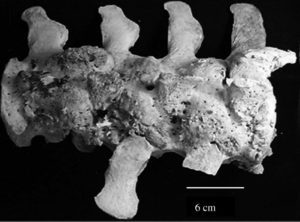
Bone Pathology
Collaborators:
Melinda Sweeney and Greg Early
Cetacean bones exhibit a wide variety of chronic bone pathology. We are interested in diagnosing pathologies we have observed in the context of aquatic locomotion and diving. See for instance: 2005 Sweeny, M., J. Price, G. Jones, T. French, G. Early, M. Moore (2005) Spondylitic changes in long-finned pilot whales (Globicephala melas) stranded on Cape Cod, Massachusetts, USA, between 1982 and 2000. J. Wildlife Disease 41: 717-727
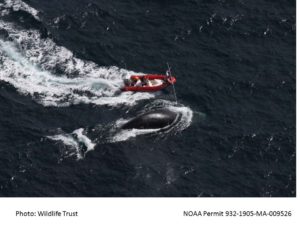
Large Whale Restraint
Collaborators:
Provincetown Center for Coastal Studies, New England Aquarium, Michael Walsh, U FLorida, Gainesvill Veterinary School
We have been investigating chemical and physical tools to faciliate and enhance the safety of large whale restraint during efforts to remove entangling fishing gear. Two workshops have resulted. Reports from the first and second workshops may be downloaded. http://www.whoi.edu/science/B/people/mmoore/Feb29_2000_MedicalIntervention.pdf http://www.whoi.edu/science/B/people/mmoore/Dec14_2001_DisentanglementWorkshopReport.pdf
2010 Moore M, Walsh M, Bailey J, Brunson D, Gulland F, Landry S, Mattila D, Mayo C, Slay C, Smith J, Rowles T Sedation at Sea of Entangled North Atlantic Right Whales (Eubalaena glacialis) to Enhance Disentanglement. PLoS ONE 5:e9597 http://dx.doi.org/9510.1371%9592Fjournal.pone.0009597
Tagging Impacts
Understanding the impacts of suction cup and implantable marine mammal tags
Collaborators:
Tom Hurst, WHOI Andreas Fahlman, Texas A&M Corpus Christi University Alex Shorter, University of Michigan Terry Hammar, WHOI Alex Zerbini, Cascadia Research
WIth support for NSF and ONR we are examining the metabolic and morphologic impacts of suction cup and implantable marine mammal tags.
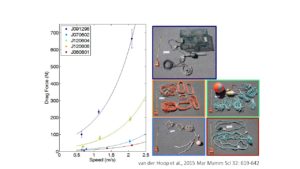
Entanglement
Collaborators:
International Fund for Animal Welfare
When a marine mammal is entrapped at depth, and lacks the strength to break out of the entangling material, it will continue to live until it goes sufficiently anoxic [i.e., deprived of oxygen] that it dies. Given the normal dive time of many minutes for small marine mammals and up to an hour for larger whales, this will not be instantaneous. Physical trauma includes net marks on the skin, especially around the beak and neck or axilla, bruising in the neck and or tail muscles, pulmonary edema and bronchial froth. All suggestive of a struggle to escape from the entrapment while the heart is still beating, prior to death. This project aims to better identify and mitigate this problem. We are also examining the sublethal morbidity of entangling gear drag on large whales.
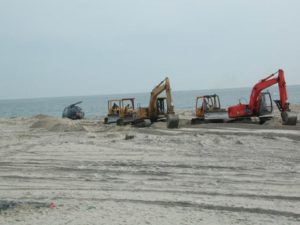
NOAA Prescott
Marine Mammal Necropsy
style="text-align: left;">Collaborators:
The IFAW Marine Mammal Rescue Research Division (Katie Moore, Brian Sharp,Misty Niemwyer,CT Harry, and Jane Hoppe), Greg Early, Betty Lentell, Katie Pugliares, Andrea Bogomolni, Inga Sidor, David Rotstein, Mike Garner and David Taylor.
With support from the NOAA Prescott Program we undertake diagnostic necropsies of marine mammal mortalities found on the beaches of Cape Cod and bycaught in fishing gear. We are building an understanding of the various factors that contribute to these mortalities. Support from this program has enabled a Necropsy Manual that can be downloaded at: "https://darchive.mblwhoilibrary.org/handle/1912/1823/ A colleague, David Taylor has prepared an extensive collection of images of whale pelvic bones. They can be viewed at: http://www.whoi.edu/science/B/whalepelvics/
